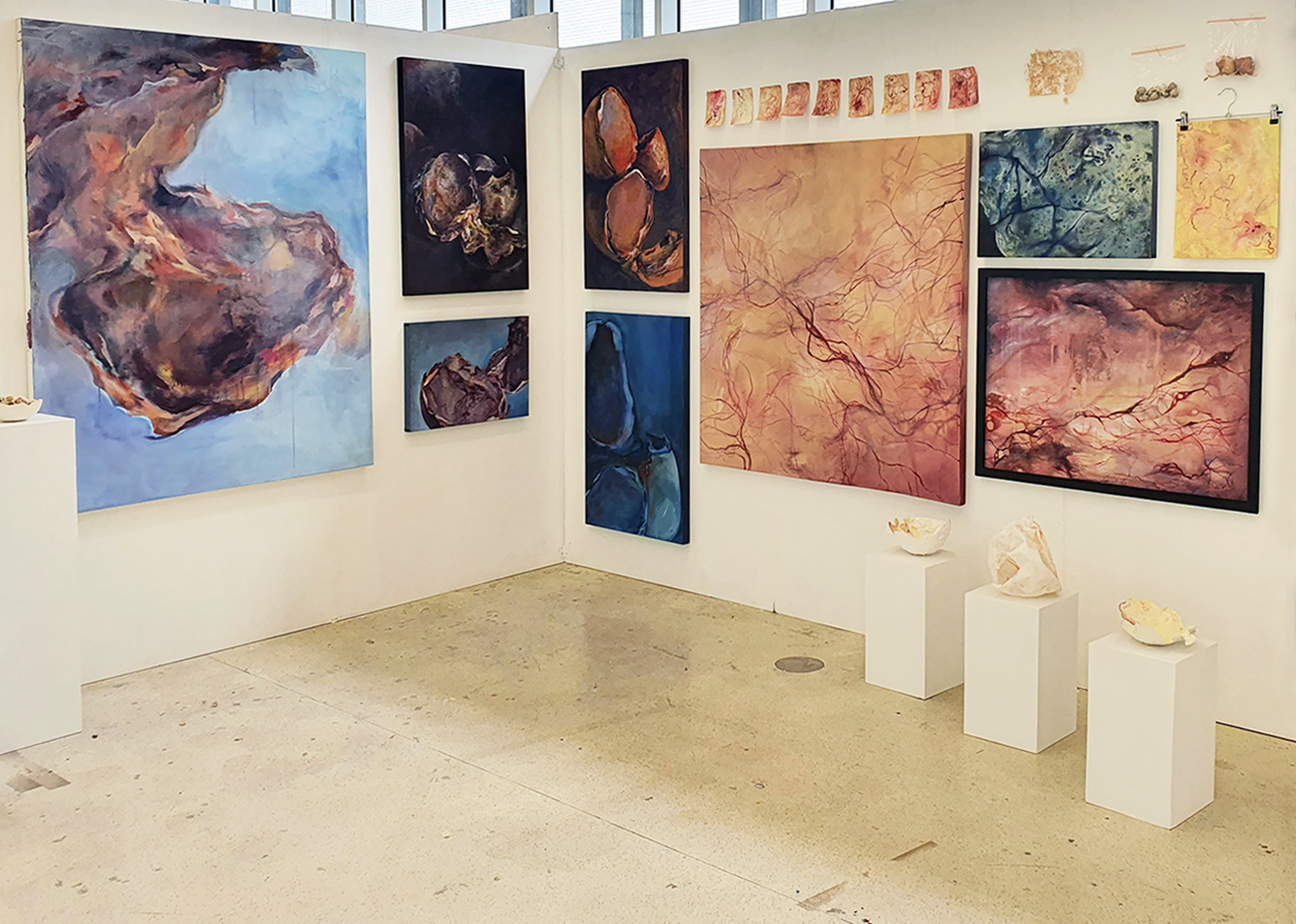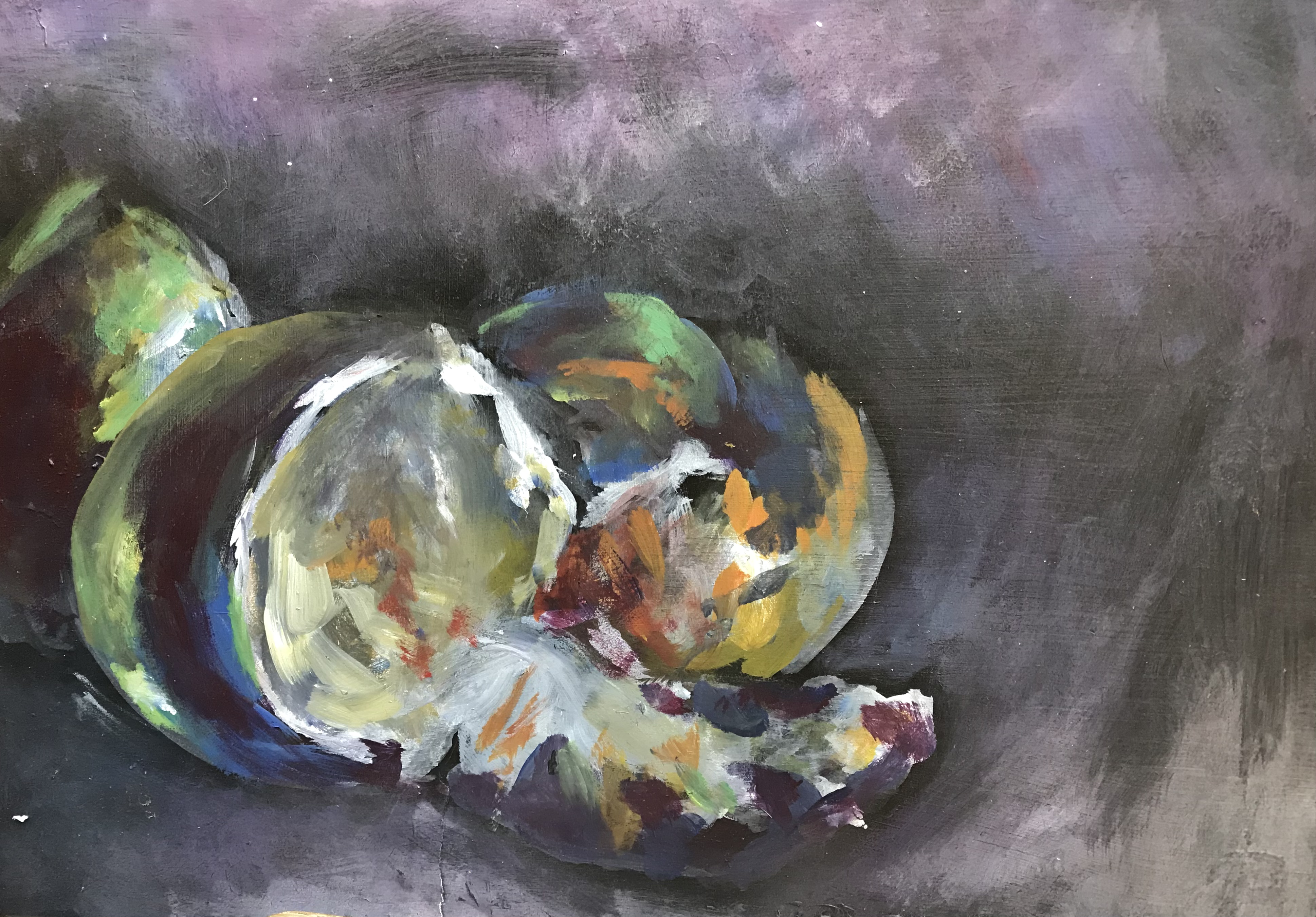Incubation (2021)
Body of work for final year assessment for Bachelor of Contemporary Arts at UniSA.

Photo: Sia Duff

Photo: Sia Duff

Photo: Sia Duff

Incubation is a body of work inspired by eggshells cast off from hatched birds, candled eggs, and the process of incubation and hatching birds. I aim to explore the egg, not as a food or waste item, but as a treasure, rich with concealed meaning and hidden formal beauty.
I have chosen to display my body of work as an installation: a mixture of different experiments and finished paintings to demonstrate connections and relationships between different formal aspects of eggs. I hope to capture the paradoxical – simultaneously soft and hard – qualities of the egg, as well as to emphasise analogies to landscapes, emergent fractal properties and repeated patterns across seemingly unrelated formal explorations. Eggshells are tiny, precious remnants of a fascinating process and of life.


Above: Individual photographs of paintings comprising the installation
I also love eggshells as artefacts, because they remind me of the hatching process, and of my fond memories of living with animals. I grew up around birds, and hatching eggs has been a part of my life since I can remember. I have wonderful family memories of collecting eggs and watching in awe when tiny, barely moving chicks slowly broke through solid shell as their very first act on earth. Though we mostly live apart now, an announcement of hatching chicks still brings my whole family together within hours, and eggshells have a strong emotional resonance with me.
Through my work I aim to use the egg as a metaphor to discuss animals and humans’ place in the animal kingdom. In various painting experiments in different mediums, I aim to emphasise the familiar bodily qualities of the egg – the evocation of veins, fluids and membranes. I hope this suggests an empathetic connection between the experiences and corporeal realities we share with the birds that came from these eggs.
At the same time, the fractal-like forms that appear in the abstracted eggs suggest topographical outlines, emergent earth-systems patterns or landscapes – river systems, geological fractures and formations. Juxtaposed with the tiny and intimate subject matter – eggs, embryos, veins and soft membranes – the landscapes that emerge reflect the wider context of this seemingly singular, personal relationship: a world that is mapped and shaped by human activity.

Our love for animals is ancient and profound. Some of the earliest art on historical record depicts animals – detailed cave drawings that dance in flickering torch light. Humans have long depicted animals and their emblems with reverence and loving detail. The complex and contradictory associations humans have with animals – friendship, love, exploitation, resources – paint a confusing picture of modern understandings about our place in the animal kingdom, and in the world we are irreversibly shaping.
There is much debate over what comprises a moral approach towards living with animals, and often even our best intentions end up causing harm. There is a fine balance between help and interference.
My aim is not to argue one way or the other, but to serve as a love letter to the egg, to birds, and everything that animals share. We must reconcile our ancient, persevering, and paradoxical love for animals with the strange reality that we have changed Earth’s ecosystems forever.




Above: Individual photographs of paintings comprising the installation
Below: Details from the installation






Above: Individual photographs of paintings comprising the installation
 Above: Studio area arranged for UniSA Spring Preview, 2021.
Above: Studio area arranged for UniSA Spring Preview, 2021.Below: Other works from the series



